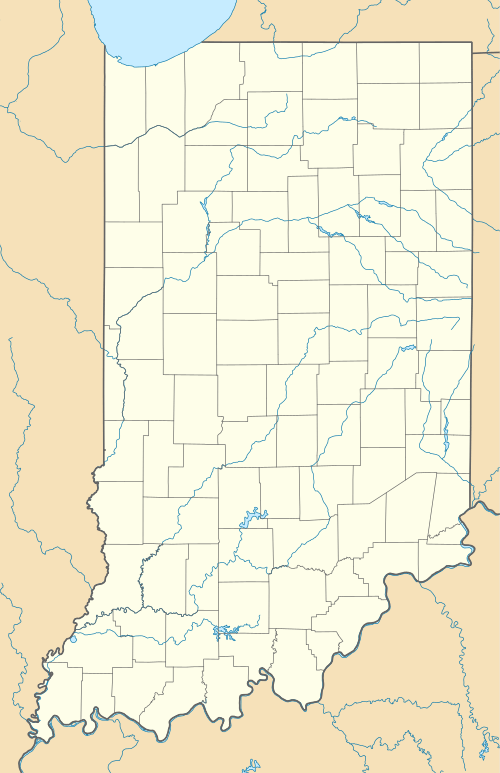Madison Historic District (Madison, Indiana)
|
Madison Historic District | |
|
| |
  | |
| Location | Roughly bounded by Crooked Creek, Springdale Cemetery, Michigan, New Hill and Telegraph Hill Rds., and Ohio River, Madison, Indiana |
|---|---|
| Coordinates | 38°44′32″N 85°22′38″W / 38.74222°N 85.37722°WCoordinates: 38°44′32″N 85°22′38″W / 38.74222°N 85.37722°W |
| Area | 2,160 acres (870 ha) |
| Architectural style | Greek Revival, Federal, Italianate |
| NRHP Reference # | [1] |
| Significant dates | |
| Added to NRHP | May 25, 1973 |
| Designated NHLD | March 20, 2006[2] |
The Madison Historic District is a historic district located in Madison, Indiana. In 2006, it was named a National Historic Landmark due to its unique Midwestern beauty and architecture scheme.[3][4] Among the prominent buildings in the district are the Lanier Mansion, one of two buildings separately considered a National Historic Landmark in the district, and the Schofield House, the birthplace of the Grand Lodge of Indiana. In total, it comprises 133 blocks of Madison, Indiana, overlooking the Ohio River in Jefferson County, Indiana.[5]
Madison's most prominent days were before 1860. It was a major transportation hub, taking river commerce and shipping it to the inland of Indiana. Once transportation routes changed, Madison faltered until the tourism industry saved it more than a century later.[6]
Many of the prominent buildings in the district were built by Madison-native-architect Francis Costigan, who favored the Greek Revival style.[7] Two of these are National Historic Landmarks: the Lanier Mansion, and the Charles L. Shrewsbury House. The Lanier Mansion was the former home of James Lanier, who lent money to governor Oliver P. Morton to run the Indiana state government to circumvent the legislative process between 1862-1865. The Shrewsbury-Windle House was built for steamboat captain Charles Shrewsbury, who would later become a mayor of Madison. Costigan, himself, built his home in the district, and it is considered one of the best uses of a narrow lot by modern architects. A thirty-foot parlor is considered the highlight of the House.[8][9][10]
Also located in the district is the old railroad depot. When the Madison & Indianapolis Railroad was first built in 1835, Madison was far bigger than the new state capital of Indianapolis. The railroad was constructed by Irish laborers.[11]
Madison was also a major stop on the Underground Railroad, with many homes in the area having once been used for assisting the escape of slaves.[4]
Gallery
- Old Railroad Depot
- Main Street
- Syracuse Lodge of the K of P, Madison, IN
References
- ↑ National Park Service (2009-03-13). "National Register Information System". National Register of Historic Places. National Park Service.
- ↑ "Madison Historic District". National Historic Landmarks Program. National Park Service. Retrieved 2009-06-05.
- ↑ Thomas, Phyllis. Indiana: Off the Beaten Path : a Guide to Unique Places (Globe Pequot, 2007) pg.152
- 1 2 National Historic Landmarks Program (NHL)
- ↑ Walking Tour of Historic Madison, Indiana. (Madison Area Convention & Visitors Bureau (MACVB), ) pg.6
- ↑ O'Guinn, Helen. Day Trips from Indianapolis, 2nd Edition (Globe Pequot, 2004) pg.111
- ↑ Fife, Camille B. (October 2003). "National Historic Landmark Nomination: Madison Historic District" (PDF). National Park Service. and Accompanying photos
- ↑ MACVB, pg. 7,8
- ↑ Historic homes and buildings of Madison, IN
- ↑ O'Guinn pg.112
- ↑ Madisonview
| Wikimedia Commons has media related to Madison Historic District. |

